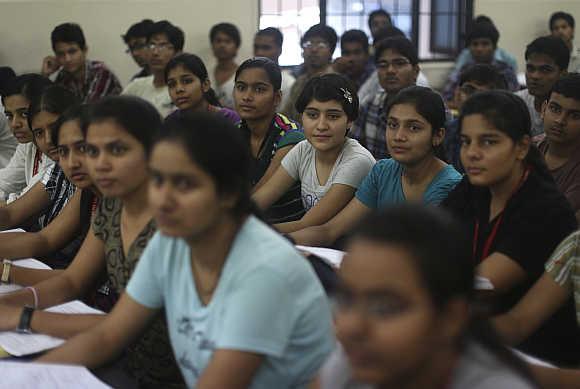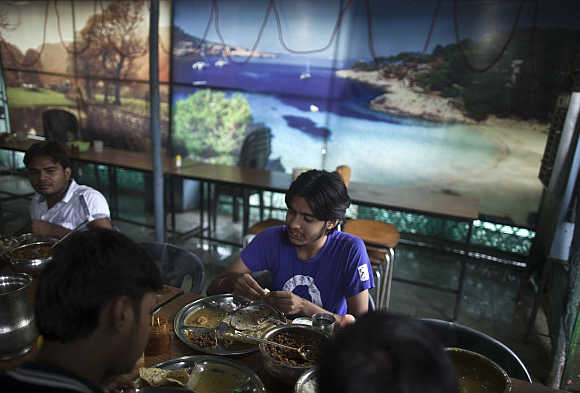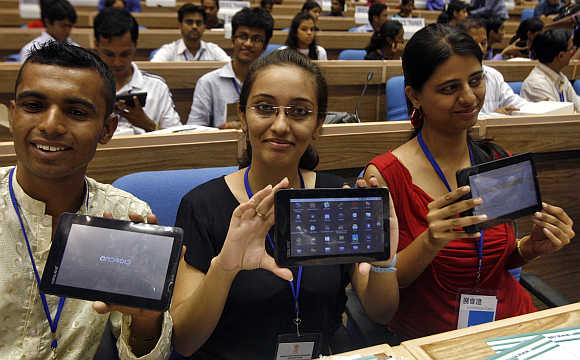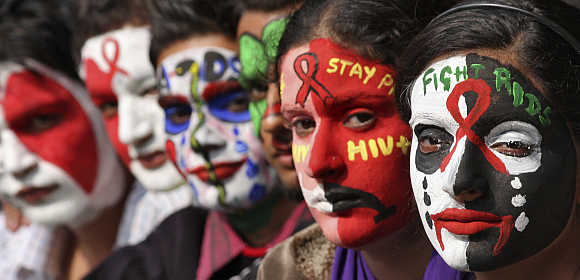 | « Back to article | Print this article |
IIT fee rise: Too little, too late
When the Indian Institutes of Technology began operations in 1953, they charged an annual fee of Rs 500 for their flagship undergraduate engineering programme.
Come 2013, they may be allowed to charge an annual fee of Rs 90,000. The IITs have revised their fee only twice - in 1998 and 2008. The recent proposal, if implemented, would raise the fee from the current Rs 50,000 a year to Rs 90,000, the steepest fee rise for the IITs.
In 2008, the IITs had doubled the fee for undergraduate courses from Rs 25,000 to Rs 50,000 a year.
Click NEXT to read more...
IIT fee rise: Too little, too late
If one compares the fee to the engineering and technology institutions in the West, the difference is stark. For instance, at the US-based Massachusetts Institute of Technology, consistently ranked among the world's top 10 engineering institutions, the annual tuition fee is Rs 22.55 lakh ($41,770).
This, MIT says on its website, is likely to be raised next year. At Carnegie Mellon, also among the world's top 10 engineering and technology institutions, the annual tuition fee for the graduate engineering programme is Rs 24.23 lakh ($44,880).
After factoring in other costs, the fee stands at Rs 27.54-31.86 lakh ($51,000-59,000).
Click NEXT to read more...
IIT fee rise: Too little, too late
Though they spend about Rs 2 lakh per student, per year, the IITs are struggling to increase the fee. "There was a proposal to increase the fee to Rs 4 lakh a year but given the resistance even a minor fee increase faces, I wonder when a full-fledged rise would take place," said an IIT director.
"After the Sixth Pay Commission, faculty costs for the IITs have risen about 70 per cent. Since salaries have risen, the money realised through a fee rise would partly go towards meeting the increasing burden of salaries and scholarships," said M Ananda Krishnan, chairman of the board of governors, IIT Kanpur.
Click NEXT to read more...
IIT fee rise: Too little, too late
"Thanks to the inflation, operating expenses are rising every year and we need to look into it. The fee rise will provide some cushion," said Devang Khakhar, director of IIT Bombay.
However, many, including Khakhar, feel a substantial rise in fees would burden students.
Khakhar told Business Standard over the years, the profiles of students coming to IITs had changed - the number of students from the upper middle class had declined and there were more from lower classes.
"Such students find the fee at IITs pretty high. Also, they do not want to take loans," he said.
Click NEXT to read more...
IIT fee rise: Too little, too late
IITs say once the National Academic Depository Bill is passed, it would enable a shift to 'demat' degrees. Then, the degrees of IIT graduates would reflect an obligation to repay the institution and money would come through the employer.
"Indian institutions should charge a higher fee from those who can afford it. They should provide scholarships, too," said Philip G Altbach, Monan professor of higher education and director, Center for International Higher Education, Boston.
He adds institutions should have a budget and salaries should be paid from this. "Depending on fees to pay the faculty is a bad idea," he says. Whether the IIT council bites the bullet in January remains to be seen.





